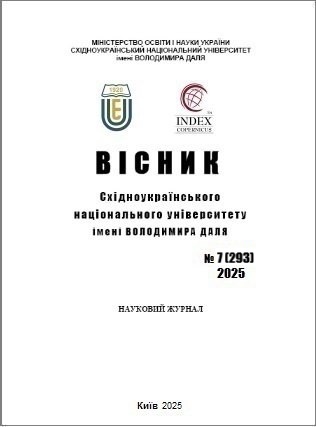Features of synthesis of optimal cam profiles for gas distribution mechanisms of transport vehicles
DOI:
https://doi.org/10.33216/1998-7927-2025-293-7-79-89Keywords:
transport, power plants, transport technologies, resource conservation, operation, automation, computer modeling, mathematical planningAbstract
The article discusses the features of synthesizing optimal cam profiles for gas distribution mechanisms in vehicles, which play a key role in ensuring the efficiency, reliability, and environmental friendliness of power plants. The relevance of improving the design of internal combustion engines in the context of growing demands for resource conservation and reduction of operating costs is emphasized. It is shown that traditional methods of designing cam profiles do not fully take into account the complex relationships between the kinematic and dynamic characteristics of the valve mechanism, which leads to increased wear, noise, vibration, and reduced fuel efficiency.
A new methodology for synthesizing optimal cam profiles is proposed, based on the use of generalized mathematical models and methods of mathematical experiment planning. This allows the formation of optimal parameters for the accelerations of the tappet in different sections of its movement, taking into account the restrictions on the radius of curvature of the profile, contact stresses, the valve spring reserve coefficient, and the conditions for ensuring the continuous dynamics of the mechanism. The implementation of second-order mathematical plans made it possible to construct nomograms for determining the optimal parameters that ensure an increase in the completeness coefficient of the tappet lift diagram and a reduction in dynamic loads.
The results obtained prove that optimization of cam profiles contributes to reducing loads on gas distribution mechanism components, increasing its service life and reliability, as well as improving gas exchange processes in engine cylinders. This ensures an increase in power, fuel efficiency, and environmental performance of transport power plants. The developed approach is of practical importance both for the creation of new engines and for the modernization of existing designs, corresponding to current trends in the development of transport technologies.
The results of the study open up prospects for further automation of gas distribution mechanism design and integration of computer modeling into engineering practice. This allows for the creation of innovative solutions in the field of engine building, aimed at achieving high performance and durability of transport systems.
References
1. Jiang Z., Zhu T., Chen Z., Fan R., Gao Y., Zhang H., Wang L. A general design method of cam profile based on cubic splines and dynamic model: case study of a gravity-driven tricycle. Mathematics. 2022. 10(12). 1979. https://doi.org/10.3390/math10121979
2. Mo Y.K., Shim J.K., Kwak S.W., Jo M.S., Park H.S. Type synthesis of variable compression ratio engine mechanisms. Applied Sciences. 2020. 10(18), 6574. https://doi.org/10.3390/app10186574
3. Qin W., Chen Y. Study on optimal kinematic synthesis of cam profiles for engine valve trains. Applied Mathematical Modelling. 2014. Vol. 38. Issue 17–18. 4345–4353. https://doi.org/10.1016/j.apm.2014.02.015
4. Sulim A.O., Fomin O.V., Khozya P.O., Mastepan A.G. Theoretical and practical determination of parameters of on-board capacitive energy storage of the underground rolling stock. Scientific Bulletin of National Mining University. 2018. Issue 5(1), P. 79-87. doi:10.29202/nvngu/2018-5/8
5. Фомін О.В., Логвіненко О.А., Бурлуцький О.В., Фоміна А.М. Аналіз існуючих та перспективних профілів складових елементів несучих систем одиниць рухомого складу залізниць. Вісник Національного технічного університету «ХПІ». Серія: Динамiка та мiцнiсть машин. 2016. № 46(1218). С. 66-72. DOI: 10.20998/2078-9130.2016.46.88052
6. Kim J.H., Ahn K.Y., Kim S.H. Optimal synthesis of a spring-actuated cam mechanism using a cubic spline. Proceedings of the Institution of Mechanical Engineers, Part C: Journal of Mechanical Engineering Science. 2002. 216(9). 875-883. https://doi.org/10.1177/095440620221600902
7. Fomin O., Sulym А., Kulbovsky I., Khozia P., Ishchenko V. Determining rational parameters of the capacitive energy storage system for the underground railway rolling stock. Eastern-European journal of enterprise technologies. 2018. Vol. 2. No. 1 (92). Р. 63-71. https://journals.uran.ua/eejet/article/view/126080
8. Logvinenko A.A. Peculiarities of stress calculation of basic parts of valve timing gear of modern locomotive electric power installations. Metallurgical and mining industry (Machine building). 2014. No.6. P. 52-56. https://www.metaljournal.com.ua/MMI-2014-No6/
9. Gorobchenko O., Fomin O., Fomin V., Kovalenko V. Study of the influence of electric transmission parameters on the efficiency of freight rolling stock of direct current. Eastern-European journal of enterprise technologies. 2018. Vol. 1. No. 3 (91). Р. 60-67. https://journals.uran.ua/eejet/article/view/121713
10. Yu J., Huang K., Luo H., Wu Y., Long X. Manipulate optimal high-order motion parameters to construct high-speed cam curve with optimized dynamic performance. Applied Mathematical Modelling. 2020. Vol. 371. 124953. https://doi.org/10.1016/j.amc.2019.124953
11. Фомін О.В., Горбунов М.І., Бурлуцький О.В., Логвіненко О.А., Фоміна А.М. Математичне описання термічної правки вагонних металоконструкцій. Вчені записки Таврійського національного університету імені В.І. Вернадського:Серія: Технічні науки. 2018. Том 29(68). № 1. Частина 3. С.151-155. http://www.tech.vernadskyjournals.in.ua/eng/journals/2018/1_2018/part_3/28.pdf
12. Mo Y.K., Shim J.K., Kwak S.W., Jo M.S., Park H.S. Type synthesis of variable compression ratio engine mechanisms. Applied Sciences. 2020. 10(18). 6574. https://doi.org/10.3390/app10186574
13. Xie F., Zhong B., Yang G., Zhao P., Hong W., Su Y. Design and motion characteristics of cam driven hydraulic variable valve mechanism. Automotive Engineering. 2020. Vol. 42. Issue 3. 307–314. https://doi.org/10.19562/j.chinasae.qcgc.2020.03.005
14. Фомін О.В., Логвіненко О.А., Дьомін Р.Ю., Бородай Г.П., Фомін В.В., Бурлуцький О.В. Математичні моделі зміни основних показників базових несучих елементів кузовів напіввагонів. Науково-практичний журнал «Залізничний транспорт України». 2013. № 5/6(102/103). С. 95-104.
15. Sun S.Y., Wang D.S., Zhou Q.Z. Thermodynamic simulation and optimum design of valve train for cam engine with the counter position placement. Applied Mechanics and Materials. 2011. Vol. 66–68. 1234–1239. https://doi.org/10.4028/www.scientific.net/AMM.66-68.1234
16. Sun L.W., Su T.X., Xu J.F., Wang Q., Xu C.L., You G.D. Dynamics analysis and cam profile optimal design of the valve train in the diesel engine with high specific power. Advanced Materials Research. 2011. Vol. 308–310. 1636–1640. https://doi.org/10.4028/www.scientific.net/AMR.308-310.1636

